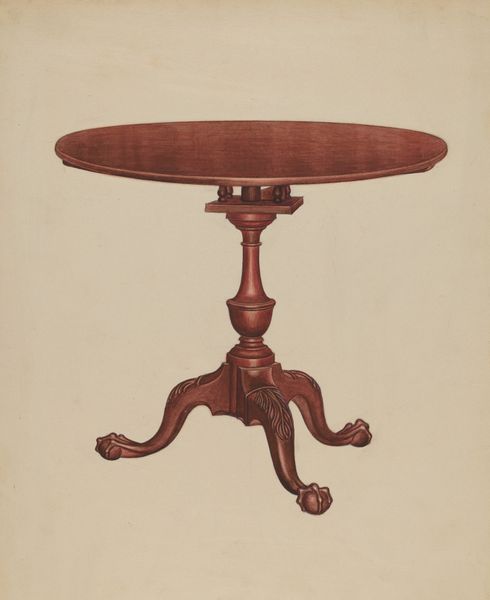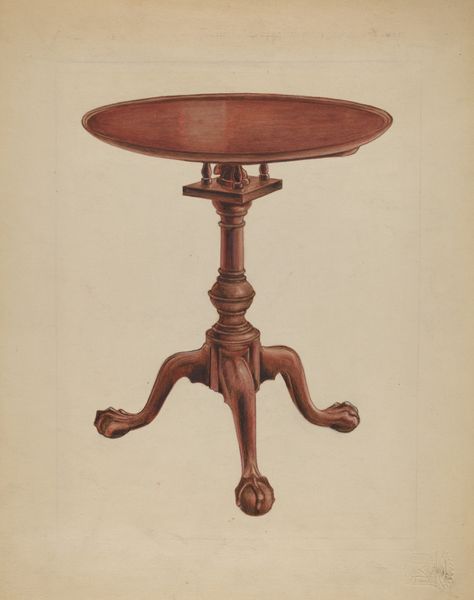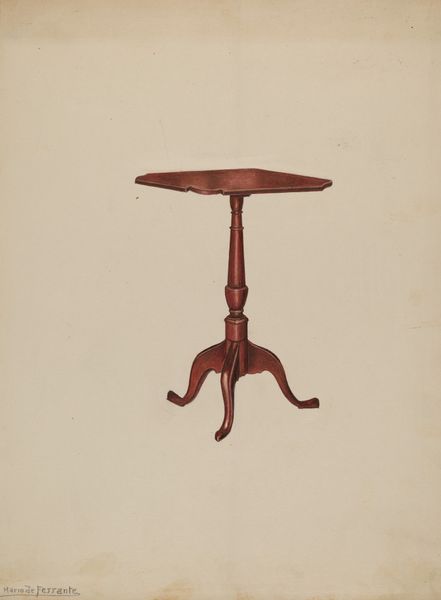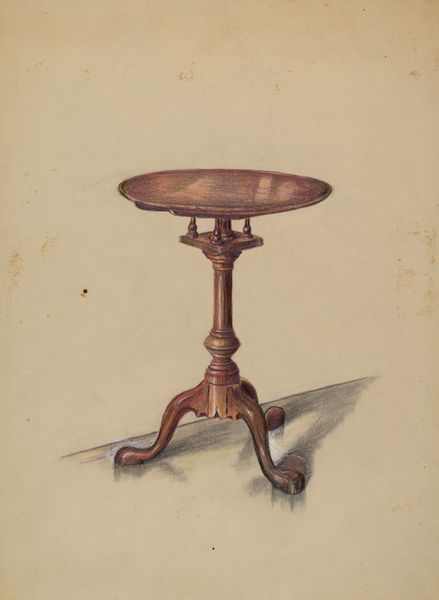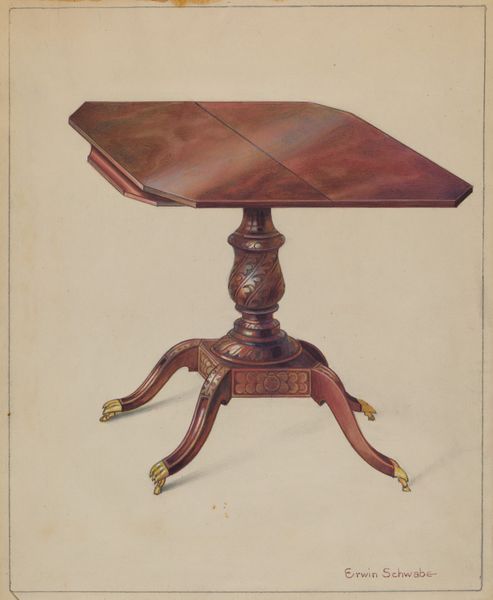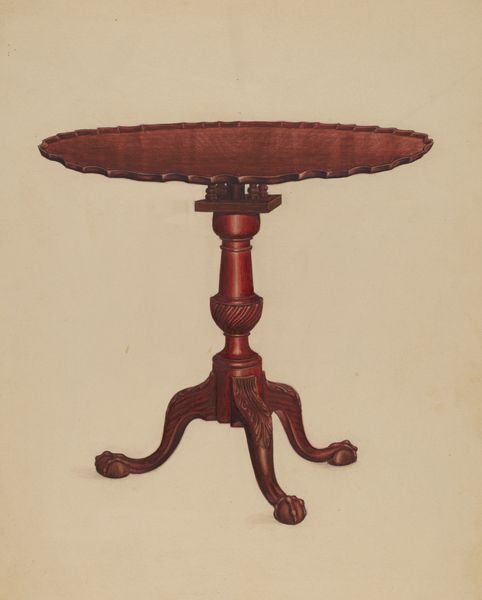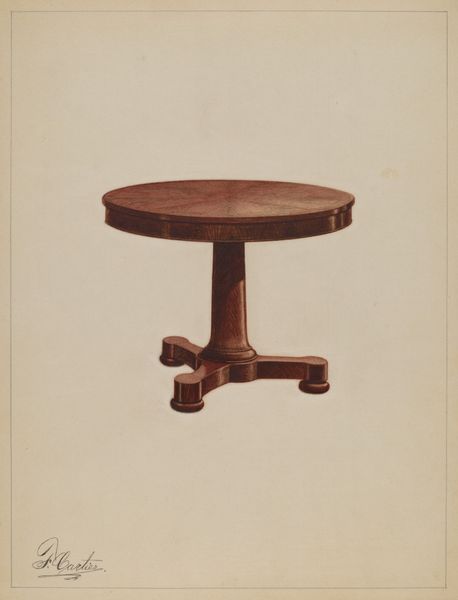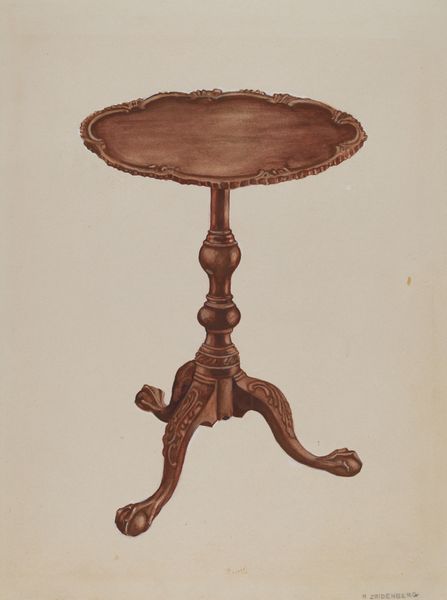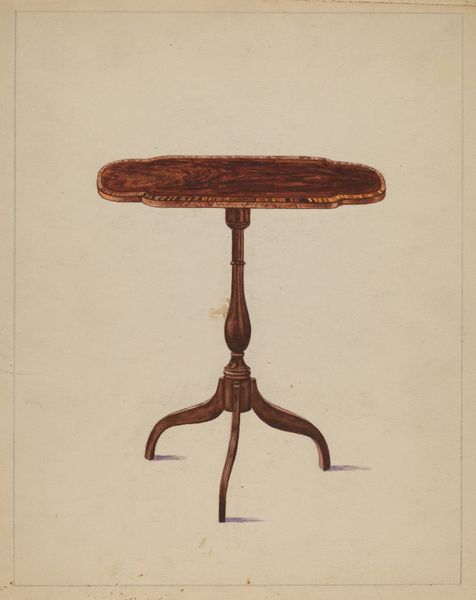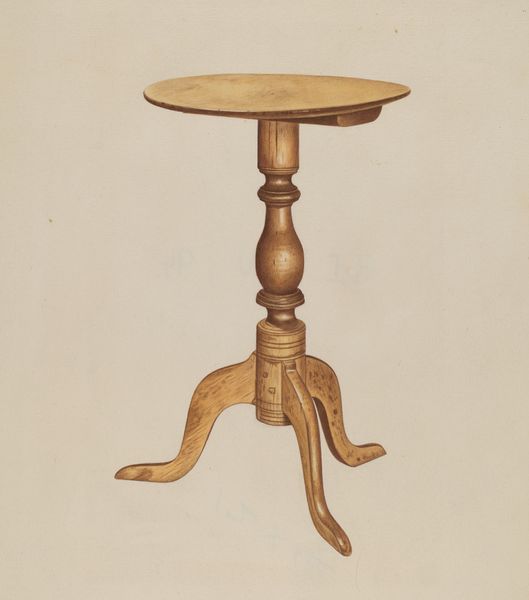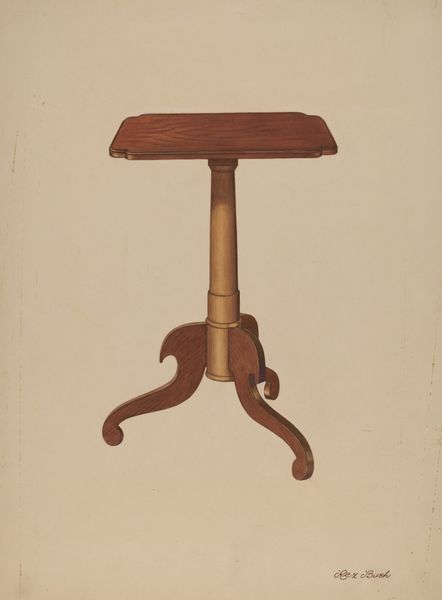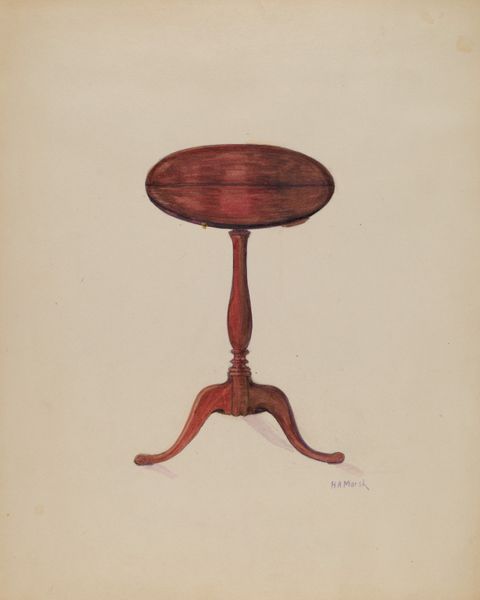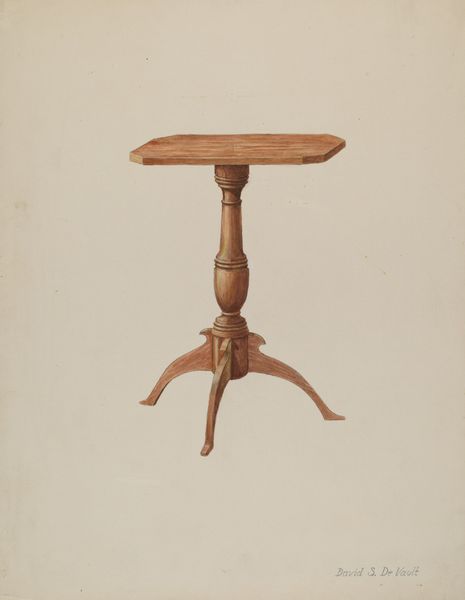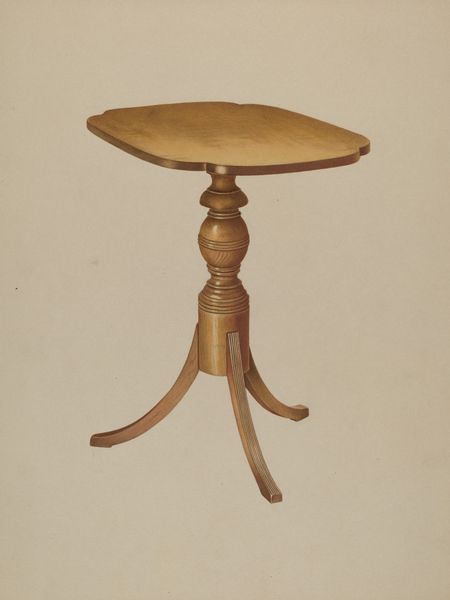
drawing, watercolor
#
drawing
#
water colours
#
watercolor
#
watercolor
Dimensions: overall: 28.7 x 22.9 cm (11 5/16 x 9 in.) Original IAD Object: 30"x35 5/8"
Copyright: National Gallery of Art: CC0 1.0
Editor: This watercolor drawing, "Tilt-top Table," was created around 1936 by Rolland Livingstone. The way the artist captured the light on the wood creates such a calm, almost nostalgic mood. How would you approach interpreting the structure of this drawing? Curator: Indeed. The composition, with its careful attention to line and form, emphasizes the object's inherent geometry. Note the symmetry established through the vertical axis. How does that verticality impact your perception of the work, versus, say, a more asymmetrical distribution of elements? Editor: I see what you mean! It grounds it somehow, gives it a sense of stability, even permanence. And what about the use of color, its subtle shifts in tone and saturation? Curator: Precisely. The limited palette – a range of browns and creams – reinforces the structural solidity. Observe the artist's rendering of the wood grain. Livingstone is less interested in representing the "real" texture of wood than in creating an intricate visual pattern across the surface. Is that a strategy? Editor: So it's less about pure representation and more about design? It’s quite illuminating to consider its composition as a pattern in and of itself, and not just an image *of* something. Curator: Exactly. Looking past surface imitation permits us to better comprehend an image's core organization. The drawing becomes a framework rather than a duplicate. Editor: This exploration of form and pattern is helping me look at it in a completely new way, it really gives clarity. Curator: By considering the compositional structure, we may understand artistic goals above and beyond representation alone.
Comments
No comments
Be the first to comment and join the conversation on the ultimate creative platform.
